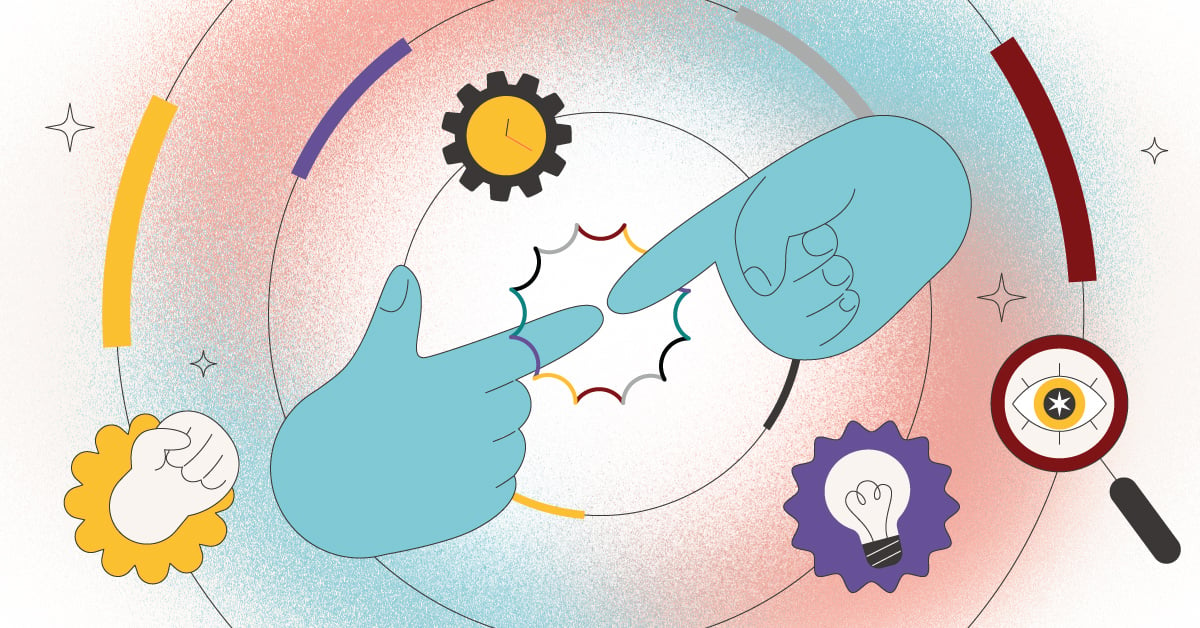
Drivers, also known as motivators, are what gets a person out of bed every morning to do the things they do. They are the reason behind the behaviors, the things that essentially make each and every one of us who we are. Sometimes, our most dominant driving forces become overextended and this thing that we normally consider a positive can turn into a negative. Several examples of how that can manifest in everyday life are illustrated here.
Altruistic and Selfless
According to TTI Success Insights, there are 12 Driving Forces® that determine how we approach our day-to-day activities. Two of those drivers are Altruistic and Selfless. Altruistic refers to people are driven to help others for the satisfaction of being helpful while Selfless refers to people driven to complete tasks for the sake of completion.
Someone possessing these two drivers can create conflict with someone who puts a premium on time and wants things done quickly. Imagine a manager who is facing a deadline and needs a task completed as soon as possible. While the manager ideally wants high-quality work, that may be less important than meeting the deadline.
Being Altruistic, the worker wants to do anything to help the manager, often going over and above to do so. Couple that driver with the Selfless driving force, the worker will spare no effort, including time invested, to be as thorough as possible. Simply put, the employee wants to exceed the boss’ expectations.
What the employee doesn’t stop to realize is that by spending so much time going “over and above,” he or she becomes inefficient and causes frustration with the manager that just wants the task completed in a timely manner. This is a classic case of overextended drivers becoming a detriment.
A solution to this overextension is for the employee to deliver exactly what is asked, then offer additional ideas that might create a better end-result. Taking this approach gives the manager a chance to determine if the additional time and effort spent will be worth it.
Harmonious
Those with a Harmonious driver are driven by the experience, subjective viewpoints and seek balance in their surroundings. Harmonious people tend to live in the moment and enjoy life as much as they can. Visit a Harmonious person’s home and it’s likely to be creatively designed and visually appealing.
Just like anything else, too much emphasis on the Harmonious driver can be detrimental. With balance being such an important component, those with a strong Harmonious driver can be easily derailed when the experience doesn’t go exactly the way they envisioned. When facing challenges and obstacles, a high-Harmonious person may take longer to adjust and recover than someone who views life through a more objective lens.
People led by a Harmonious driver need to adapt to a workplace that may possess a less Harmonious outlook and learn to adjust more quickly when something doesn’t go their way. They need to understand that often when conflict occurs, it’s rarely personal, so no need to allow this to derail the entire day.
Commanding
Those possessing a Commanding driver are driven by status, recognition and control over personal freedom. A person with a high Commanding driver lives life to leave a legacy. Driven by an insatiable desire to be recognized, this person needs to know the world is aware of his or her presence and accomplishments.
The problem with a Commanding driver in the workplace is that it can skew the actions taken by an employee. Those who are Commanding may prioritize their own personal goals over the best interest of the company. They are creating a legacy for themselves, not necessarily the company for which they work.
An example of this coming to life in the workplace can be found in an employee looking to establish a reputation as a leader. The employee may take the lead in certain situations to establish credibility. However, if that person isn’t the actual leader, and continues to take leadership roles, conflict and contention will quickly arise when the true leader begins to feel challenged by this person acting outside of the boundaries of traditional responsibility.
Intellectual
Those with an Intellectual driver are driven by opportunities to learn and gain knowledge. They want to know everything there is to know about a subject and are willing and eager to devote as much time as necessary toward that endeavor.
Going full-tilt into learning mode may make a person lose sight of the bigger picture. This person may spend too much time in a quest to further learning, causing delays. While the Intellectual will strive for gathering as much knowledge as possible, sometimes “good enough” needs to suffice to move a project along and stay on schedule.
Sometimes with the Intellectual driver, it comes down to application versus acquisition. A person may crave the gathering of knowledge, but they may not necessarily apply that knowledge meaningfully. That is certainly not the case across the board, but it’s something that anyone with a high Intellectual driver should monitor. They can do so by pondering whether they have a quest to know everything possible about a topic or, instead, if they are driven by how that knowledge can be applied.
Conclusion
Every person is wired differently, driven by things unique to individual. The things that drive someone the most tend to be the person’s primary drivers. In order to achieve balance in the workplace, being aware that these drivers may sometimes get overextended is the first step in keeping them in check. Partnering with someone who has different drivers can be a great checks and balances system to ensure that your personal drivers aren’t becoming too much of a good thing.




